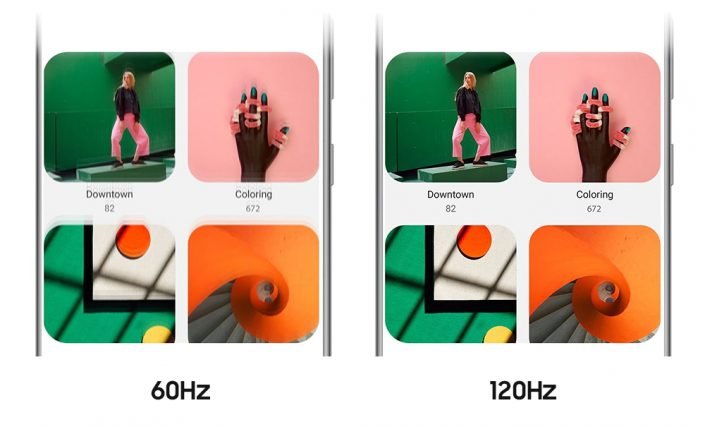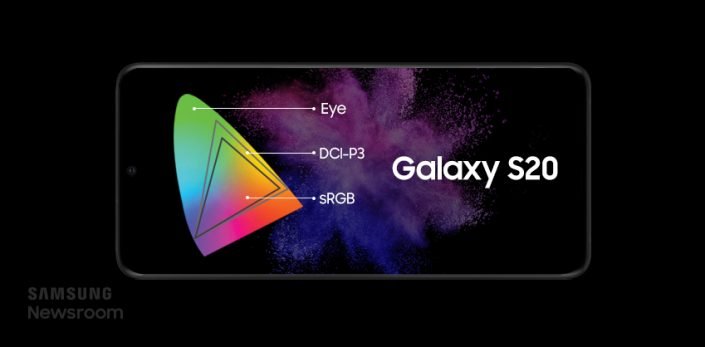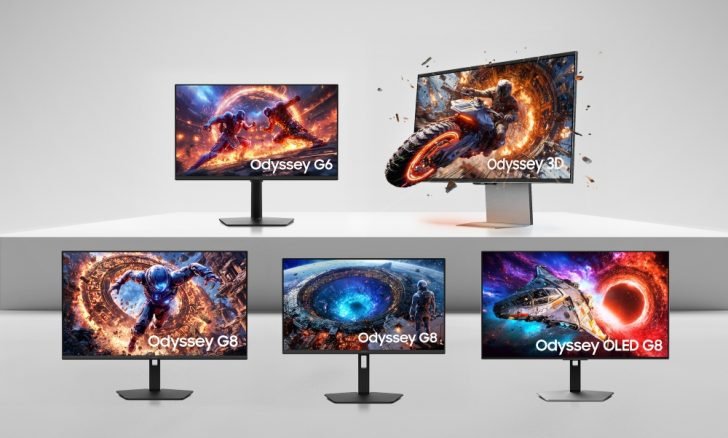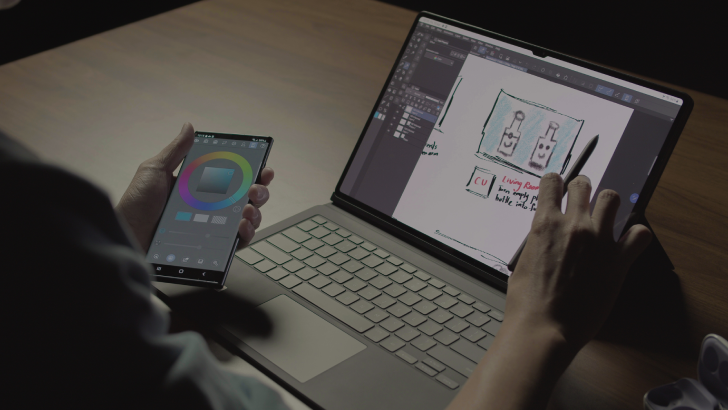Once you enter the world of high refresh displays, there is no going back. A refresh rate refers to the number of still images that can appear on a screen in the space of a single second, meaning that a higher refresh rate makes for smoother video playback and display motions. In today’s market, most solutions offer displays with 60Hz refresh rates (60 images displayed per second), and any solution with a refresh rate higher than this is referred to as a ‘high refresh rate display’. With its 120Hz refresh rate, the Galaxy S20 is one such solution.
Solutions with high refresh rate displays are optimal not only for gamers, for whom the technology softens and smooth out in-game movements, but also for the increasing number of users who watch videos on their smartphones, since a high refresh rate makes video playback smoother, too. Samsung Newsroom sat down with the developers of the Galaxy S20’s display to learn more about how the innovative 120Hz display is providing users with next-level viewing experiences.

Engineers Michael Kim (left) and Sung-won Ryu, developers of the Galaxy S20’s display
Gamers Driven to New Heights with a Display that Refreshes Every 0.008 Seconds
The Galaxy S20’s high refresh rate is a revelation when it comes to gaming. For fighting games in particular, in which split-second decision making can prove the difference between victory and defeat, a display with a rapid refresh rate can provide users with a vital edge.
“The key to winning in a fighting game is to effectively evade attacks from your opponent while timing your own attacks well,” noted Michael Kim, an engineer from the Display Group at Samsung Electronics’ Mobile Communications Business. “A screen with a high refresh rate displays more images every second, allowing you to pick up the movements of your opponent’s character quicker and act that little bit faster. A 120Hz display shows a new image every 0.008 seconds.” Using a display that features so many changes in a short period of time additionally has applications in underpinning and facilitating 3D gaming.

Enjoy a Smooth Screen Flow When Surfing the Web
While a 120Hz refresh rate serves to optimize a user’s gaming experience, the original goal behind developing this high screen refresh rate was to provide a better screen control environment, making it easier for users to touch, scroll and swipe their screens. “When users are scrolling on their display, the smoother the screen will flow, resembling the analog experience, the more comfortable it is to use,” explained Kim. “The resulting effect is that of watching something happen in real life right before your eyes.”

Feeling like you have a good grip on your smartphone is also a sensation closely related to a display’s refresh rate. Many conventional displays will scan a finger scrolling on the screen up to 120 times per second, but the Galaxy S20 goes beyond this by scanning finger movement up to 240 times per second. This instant feedback goes as far as possible to make users feel as if they are manipulating something physical when scrolling on-screen. “A high refresh rate on a display helps give a real, grounded sense of touch to users when they are scrolling,” noted engineer Sung-won Ryu. “You can actually experience that fast reaction speed in real-time on the display.”
The high refresh rate granted by the 120Hz display also improves a user’s experience when they are surfing the web, using social networking services and reading webcomics. When scrolling by pushing along your screen from bottom to top, the consecutive frames of a webcomic can remain hidden until this upwards scroll has been fully completed. “With a 120Hz display, you can see any and all contents on a web page even during the scrolling action,” explained Kim. “This makes for a much more satisfactory user experience.”
A Display that Optimizes the Color Gamut Based on Usage
The color gamut of a display refers to the limited spectrum of color expression within which a given screen or monitor will output content. Generally, the color gamut used for digital appliances is sRGB, first introduced in 1996 for Internet, computer, printer, digital camera and scanner devices. However, the Galaxy S20 harnesses the DCI-P3 standard as well as the conventional sRGB one, a color area formulated by the film industry for digital movies. The benefit this offers users is a darker and richer color gamut as compared to sRGB, and the Galaxy S20 also supports Automatic Color Management which optimizes the color gamut based on the type of content a user is enjoying.

“For the best viewing experience, the color gamut should reflect that of the images being shown on the display,” explained Sung-Won Ryu. “The Galaxy S20’s display will automatically adjust its color gamut from DCI-P3 for HDR videos to sRGB for images. This automatic shift to present the richest color possible is a strength that only the Dynamic AMOLED 2X possesses. Dynamic AMOLED 2X presents users with deeper and darker colors onscreen but also achieves precise color rendering thanks to this control over color gamuts.”
A Careful Balance of High Resolution, High Luminance and High Refresh Rate
“When designing our flagship products, our goal was to offer users the 120Hz display experience within a thin smartphone,” noted Kim. But providing this experience that married high resolution with a high refresh rate was a challenge even for the Samsung developers and their expertise in developing best-in-class technologies for TV, monitors and displays. “TV displays benefit from unlimited power supplies and four to five times bigger pixels compared with smartphones,” noted Kim. “Given that smartphones have more components, from the AP to the 5G chipset to the 5G antenna, the power supply has to be negotiated between all these parts.”
“In theory, having both a high resolution and a high refresh rate on a mobile device is feasible, but given power management and device use time considerations, we have been cautious when implementing these capabilities,” noted Ryu. “We are constantly developing our technological innovations to reduce power consumption by studying many different device use scenarios.”

One of the key determining factors of display performance is brightness. The brightness of a display is expressed with the term ‘luminance’, or the amount of light per unit area reflected from an object. The Galaxy S20’s luminance is a maximum of 1,200 nits, expressing both dark and bright shades in order to showcase images clearly, even during the daytime. “There are many elements to consider when it comes to screen quality, but it is a given that the higher a display’s luminance, the better the display looks,” said Kim. “The Galaxy S20’s display is at the maximum brightness accorded by the greatest possible extent of power management.”
Some users may not be aware of the true strength of a 120 Hz display. “With apps such as YouTube now offering videos in basic HD quality, when you go back and watch older videos on the platform in SD, you realize that the quality is actually much lower than you originally thought,” explained Kim. “The same is true of 120Hz displays. People may have no complaints about a 60Hz display, but once they get used to the quality of 120Hz, they can never go back to 60Hz.”
Bringing 120Hz to More Devices
Galaxy smartphones displays have always brought users new and innovative technologies, from high resolution and high pixels per inch (PPI) to AMOLED technology and Automatic Color Management. Looking forward, both Kim and Ryu are confident that there are still limitless possibilities for innovation when it comes to developing better displays.
“We can improve a user’s display experience by developing optimized device power management,” noted Kim. “We will continue to work hard to provide the best possible experience to all users.”
“By developing our high refresh rate technology, we are confident that 120Hz technologies will one day be available not just for the Galaxy S series, but across various other device lines, too,” affirmed Ryu.







![[Video] Unfolding What’s Next: Unboxing Galaxy Z TriFold](https://stuffmotion.com/wp-content/uploads/2025/12/Samsung-Mobile-Galaxy-Z-TriFold-Unboxing-Video_thumb932-218x150.jpg)












![[CES 2026] Quest For Perfect Color…Samsung To Push Boundaries of TV at The First Look](https://stuffmotion.com/wp-content/uploads/2025/12/Samsung-TVs-and-Displays-CES-2026-The-First-Look-Push-Boundaries-of-TV_Thumb728-218x150.jpg)




















